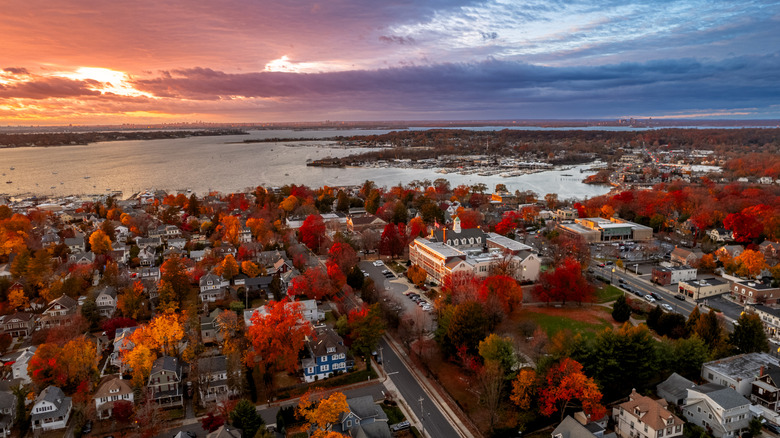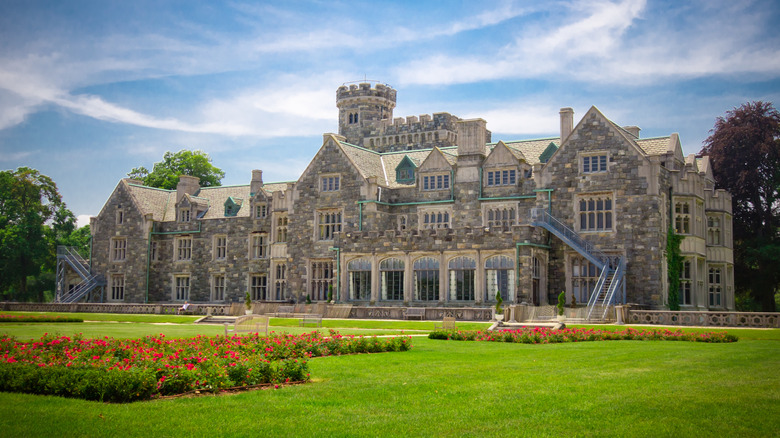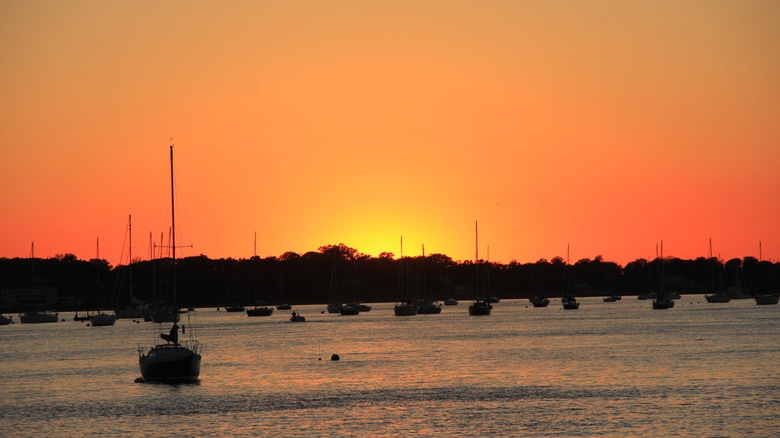Can a place combine sparkling bayfront views with an upscale yet laid-back atmosphere and a prime position close to the thrills of the Big Apple? The answer is yes, and can be found in the harbor town of Port Washington, New York. Located on the Nassau County’s Nort Shore, in western Long Island — not far from quaint historic towns full of shopping and picturesque views and beautiful family-friendly uncrowded alternatives to the Hamptons – this 17,613-inhabitant hamlet strikes the perfect balance between quiet coastal charm, proximity to the amenities of the city, and an overall diverse yet connected community.
Elegant waterfront restaurants, like the 120-year-old Louie’s Prime Steak & Seafood, famous for its fresh meat and fish specialties, and Butler’s Flat Clam Shack, near Morgan’s Dock Park, offer breathtaking sunset views over the tranquil Manhasset Bay. The residential area — mainly centered around Sands Point, Flower Hill, Manorhaven, and Baxter Estates– showcases a plethora of options for all needs and budgets, from historic estates to luxury villas and modern condos. Education is another leading factor driving both interest and urban growth, especially among families. Paul D. Schreiber High School stands out for its strong focus on individual empowerment and commitment to educational equity.
And to crown it all is Port Washington’s unbeatable location, just around the corner from the hustle and bustle of Manhattan. The drive from the heart of the Financial District takes less than 1.5 hours, while the Port Washington Branch conveniently connects the town to Woodside Station in the borough of Queens and to Penn Station and Grand Central Terminal in Midtown Manhattan (trains run up to twice an hour even during off-peak times).
Port Washington, from Cow Neck to present-day glamour
Today, Port Washington stands as one of the most alluring destinations in New York State, but that wasn’t always the case. Its history dates back to the mid-17th century, when settlers from England and the Netherlands purchased some acres of land from the indigenous Matinecock people and established a modest farming and fishing community then known as “Cow Neck.” Quiet and utilitarian, the area remained largely agricultural for a long time.
The following centuries witnessed the slow and steady rise of a prolific shell-fishing industry, followed by the discovery of exceptionally high-quality sand along its shores. This material would later help build some of New York City’s most iconic skyscrapers, including two Art Deco “superstars” like the Chrysler Building and the Empire State Building, the happiest tourist attraction in all of America. Fun fact: if the sky is clear, you can see them in the distance by looking over the bay. By the late 19th and early 20th centuries, the town underwent a significant transformation: from a quiet harbor to a pivotal player in aviation history, thanks to its role as a seaplane base.
Port Washington’s working-class roots have gradually transformed into a community defined by elegance, comfort, and understated sophistication — not for nothing, it served as inspiration for “East Egg,” the fictional enclave of old-money aristocracy in F. Scott Fitzgerald’s 1925 masterpiece “The Great Gatsby.” Remarkable traces of this layered heritage are still visible today. The Cow Neck Peninsula Historical Society offers a window into the area’s evolution, curating the past through engaging exhibitions and archives housed in two beautifully preserved landmarks: the Sands-Willets House and the Dodge Homestead. The majestic Howard Gould’s Hempstead House near the Sands Point Preserve, a castle-like building in true 20th-century eclectic revival style, perfectly captures the glamorous Roaring Twenties spirit that continues to resonate across Long Island’s picturesque peninsula.




